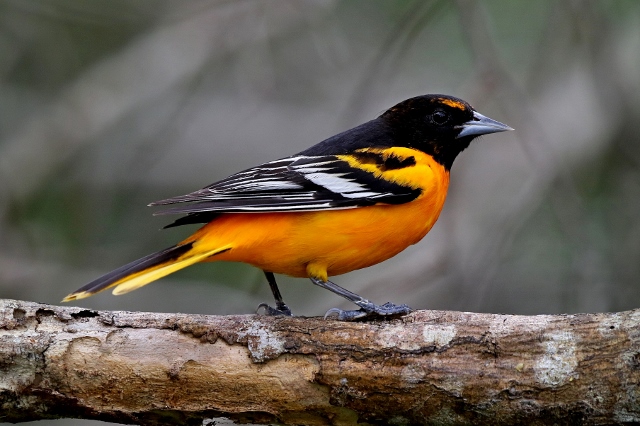by Marilyn Lorenz Photos by Chuck Lorenz
Bright orange and jet black Orioles are hard to miss in the spring. Medium-sized song birds they have relatively slender, sharply pointed bills and long tails.

Of course, when you mention orioles it is the Baltimore that comes to mind. This vivid harbinger of spring is well known to the eastern two-thirds of the country. The females are of more subtle coloring, being softer gray and dull yellow, but still with black wings. Commonly found in open woodland or the scattered trees of suburban neighborhoods they especially like to build their distinctive nests overhanging a stream. If you kayak or canoe a river you will likely see these odd coconut-in-a-sock nests swinging high over the water. Insects congregate by water and that means easy meals for hungry youngsters.
Special to the Rio Grande Valley are our beloved Altamiras. The largest of the Oriole family they are truly tropical. Altamiras are natives in the Valley and people travel from all over the country to see them in our backyards.


Unlike the other Orioles, both sexes of the Altamira look alike; brilliantly orange with sharp black throats, wings, upper backs and tails. There is a distinct orange shoulder patch on the upper part of the wing and a white bar lower down. The female prefers to construct the long-hanging nest in tepeguaje trees but will use mesquite if it is more convenient.
Another Oriole special to the Southwest is the Hooded. Similar to the Altamira it has more black on its face and throat and also lacks the orange wing-bar. Instead there are two white bars on its wings. The females are much softer in color, yellow underneath and rather dull grayish green on the backs and wings.

All of the Orioles respond eagerly to cut oranges and grapefruit and will flock to your yard if you offer them, providing you with hours of entertainment.
